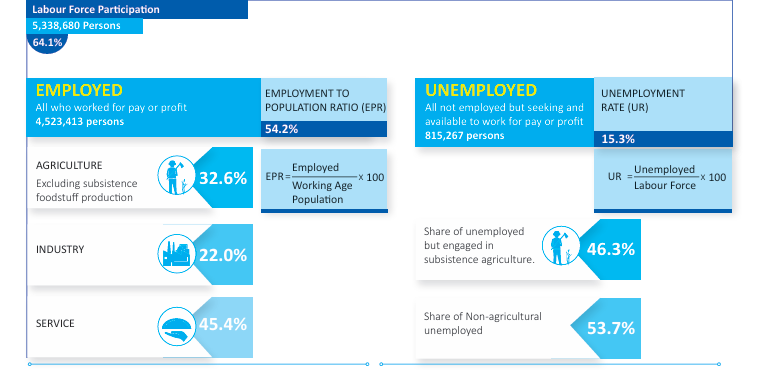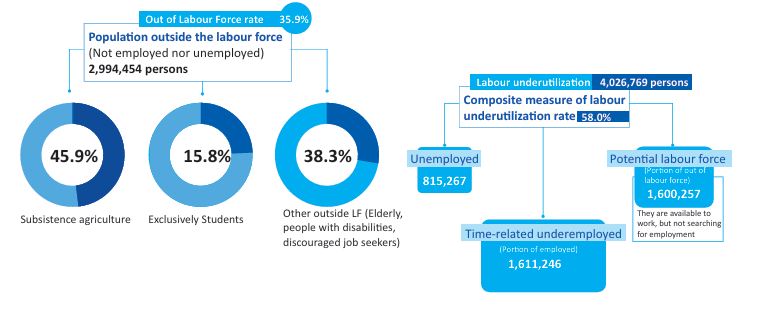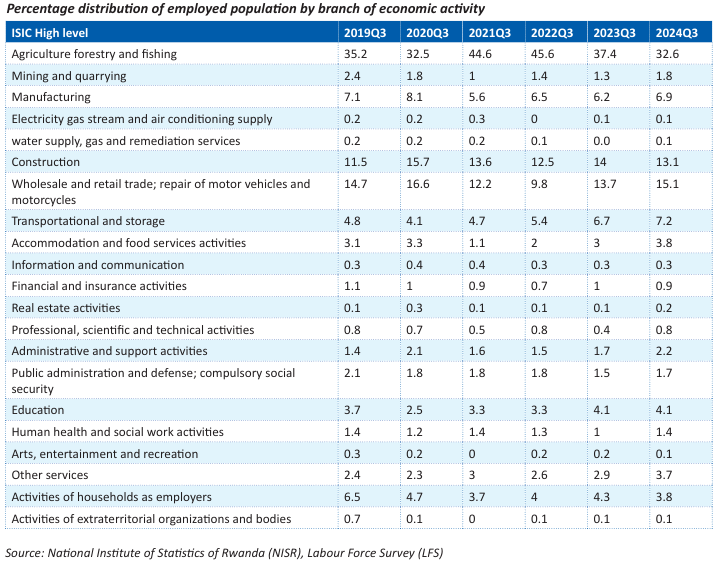In August 2024 (Q3), the working age population (16 years and above) was around 8.3 million of whom around 4.5 million were employed, 815 thousand were unemployed, and 3 million were out of labour force. The sum of the employed and unemployed population makes the population in the labour force 5.3 million persons.

The proportion of working age population who were in the labour force has steadily increased since 2022. In August 2024, it was estimated to be 64.1 % which is 4.3 percentage points higher than the estimated value in August 2023 (59.8%). The rate of the population outside labour force decreased to 35.9% in August 2024(Q3) from 40.2% in August 2023(Q3).
Generally, the labour force participation rate has been higher among the male than the female population over time. The gender gap in labour force participation rate was around 17.8 percentage points in August 2024(Q3) and it is almost the same as compared to the situation in the same quarter last year
EMPLOYMENT
The employment-to-population ratio (EPR) increased to 54.3 % in August 2024(Q3) from 49% in August 2023(Q3). EPR increased for both males and females, by 5.1 percentage points and 5.3 percentage points respectively.

In August 2024(Q3), the employment-to-population ratio was higher among males (64.3%) than females (45.4%). It was also higher for adults (55.6%) than youth aged 16-30 years old (52.6%). The employment to population ratio gender gap was 18.9 percentage points in August 2024 (Q3) and it remained almost stable as compared to August 2023 (Q3).

The distribution of employed population by aggregated broad branches of economic activity revealed that the services sector is employing majority of the employed population in LFS August 2024(Q3). The level of employment in the agricultural sector decreased to 32.6% in August 2024 (Q3) when compared to the same quarter last year (37.4%). In contrast, the percentage of employed population in the service sector increased to 45.4% in August 2024 (Q3), compared to 41 % observed in August 2023 (Q3) and finally, employment in the industry sector remained almost stable in August 2024 (Q3) compared to August 2023 (Q3).
UNEMPLOYMENT
In August 2024 (Q3), the unemployment rate stood at 15.3 % indicating that roughly for every 7 persons in the labour force, there was one person unemployed.

The unemployment rate decreased by 2.7 percentage points as compared to the same quarter last year; and it decreased by 0.7 percentage points as compared to the pre-COVID-19 estimate in the same quarter (16%).

The unemployment rate was higher among females (18.5%) than among males (12.5%). It was also higher among youth (18.8%) than among adults (12.6%). It was higher in rural areas than urban areas at 16 % and 13.8% respectively.

The unemployment rate gender gap was 6 percentage points in August 2024(Q3), and it declined by 1.1 percentage points as compared to the same quarter last year.
LABOUR UNDERUTILISATION
The unemployment rate is not the only component of the unmet needs for employment. Other components include time-related underemployment and potential labour force.

The labour underutilization rate was 58.0 % in August 2024(Q3). It was higher among females (65.6 %) than among males (50.3 %) and higher among youth (59.8 %) than adults (56.5 %).
